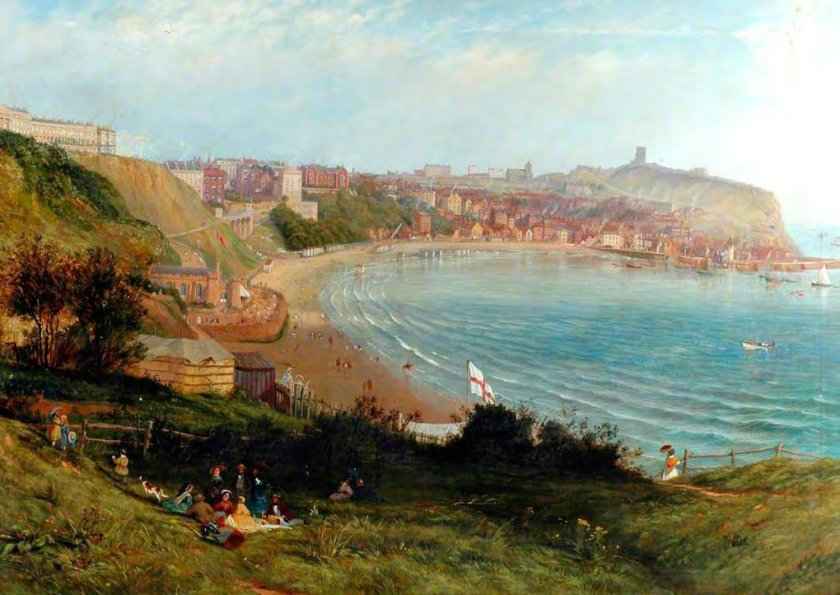
1857. Scarborough from the South showing the Wyatt gothic spa buildings and the winding cliff path from the South Cliff Bridge. The buildings glimpsed in the foreground may be a former beer house known as Jabez Hall, bought by the South Cliff Company and closed down around 1871. Coincidently this is the approximate site of the current Clock Cafe.
Thomas Harrison Hair (1810–1875), Scarborough from the South.
Scarborough Art Gallery.

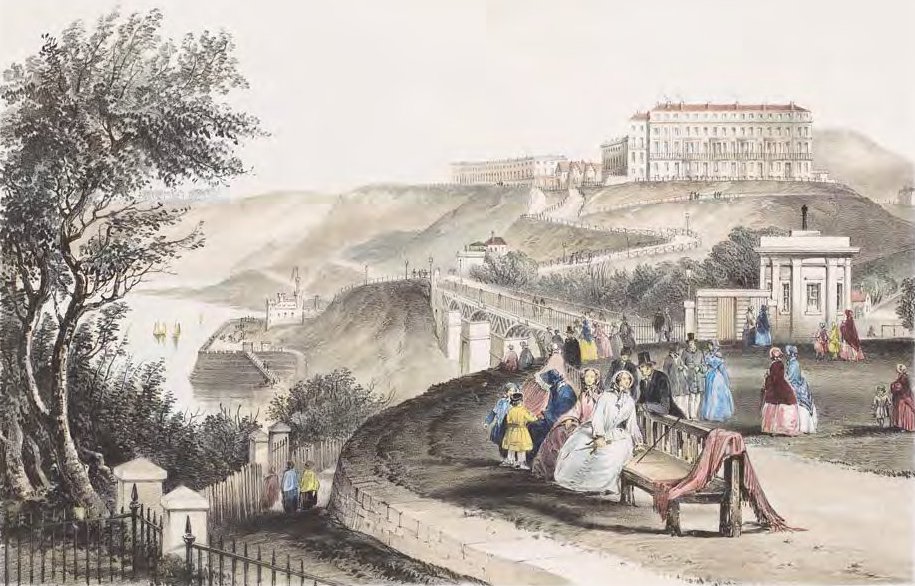
The South Cliff c.1840 by H.B Carter looking south from St.Nicholas Cliff and showing the bridge built in 1827, the kiosks for paying to enter the gardens and the path network laid out by Knowles before 1840. The mature tree growth has yet to develop. Paths up the hill to the Esplanade are bordered by rustic timber ‘X’ fencing, while through the gardens the fencing is iron post and rail. The site of the later ‘Swiss Chalet’ built around 1860 on the south side of the bridge appears to be occupied by an earlier building.

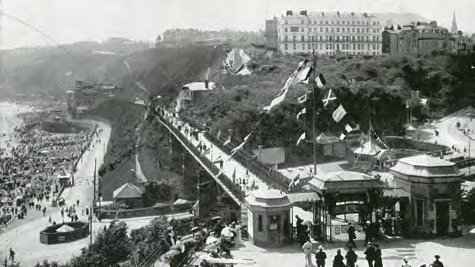

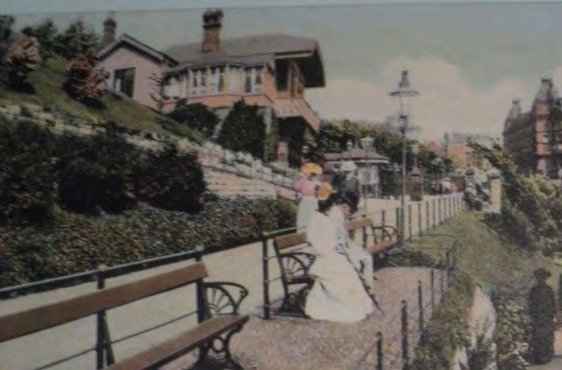
The ‘Swiss Chalet’ built around 1860.

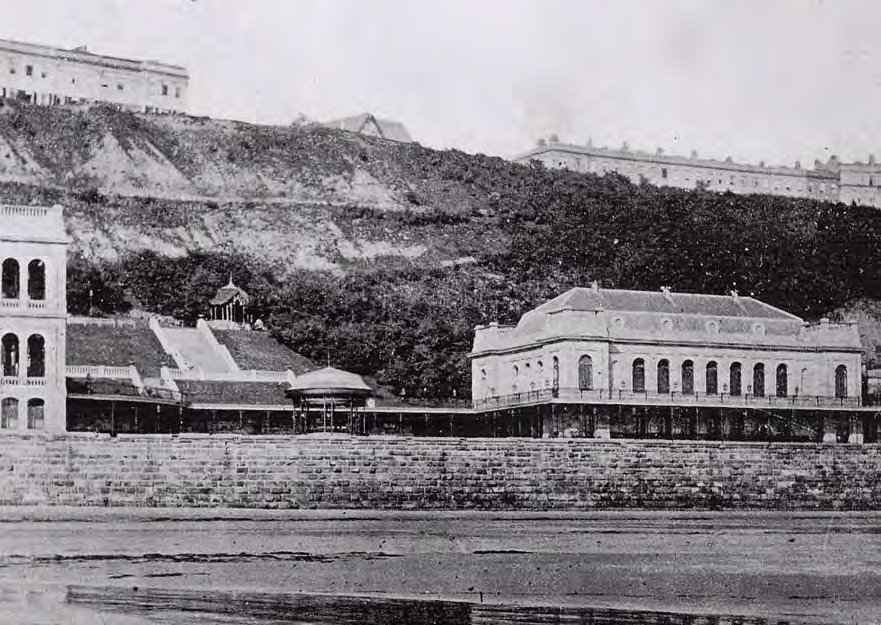
An early view of the Italians Steps or Terrace, taken from the beach showing Paxton’s Music Hall, extended Colonnade Bandstand, Watch Tower, Italianate Steps as well as the Paxton’s shelter on top of Paxton’s Steps.

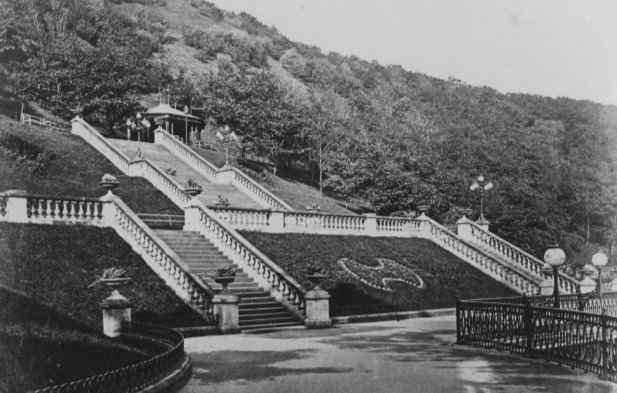
The Italian Steps or Terrace of 1859-60, designed by Joseph Paxton to connect the garden walks with the spa and promenade. Early views show no lighting present and the landscape above the steps still immature. By the 1870’s a backdrop of planted trees had developed, formal planting beds were in place complemented by iron railings and gas lamp standards using glass bowls.

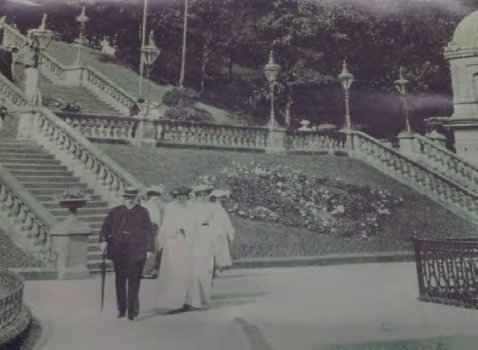

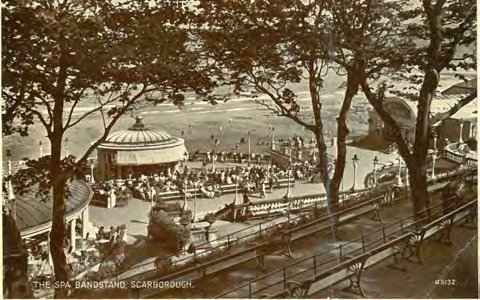

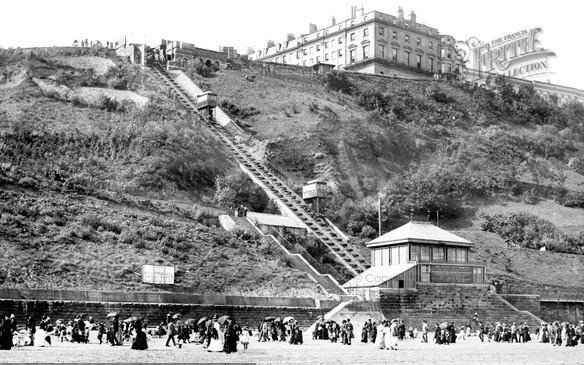
The Cliff Tramway shortly after construction and before widening of the promenade. The winding path up the cliff can be seen on the south side, as can a small building over the tunnel beneath the tracks.

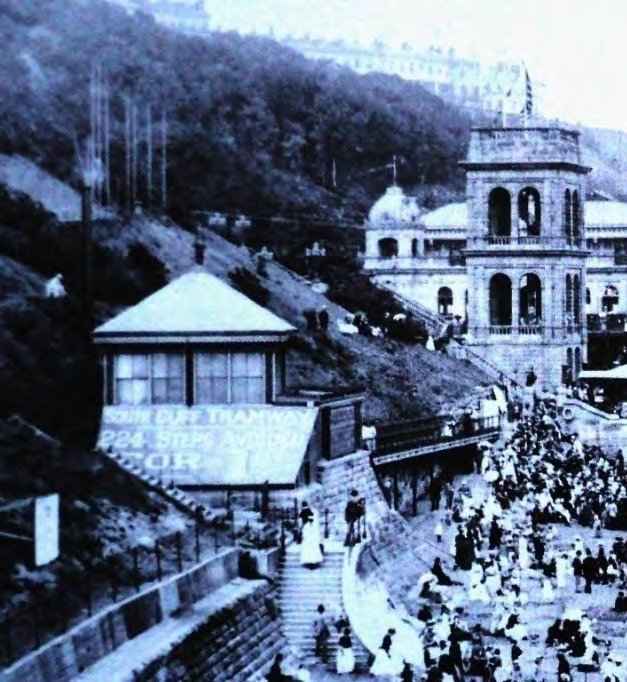
The famous roof sign of the Cliff Lift can be seen promising “224 steps avoided for 1d”.

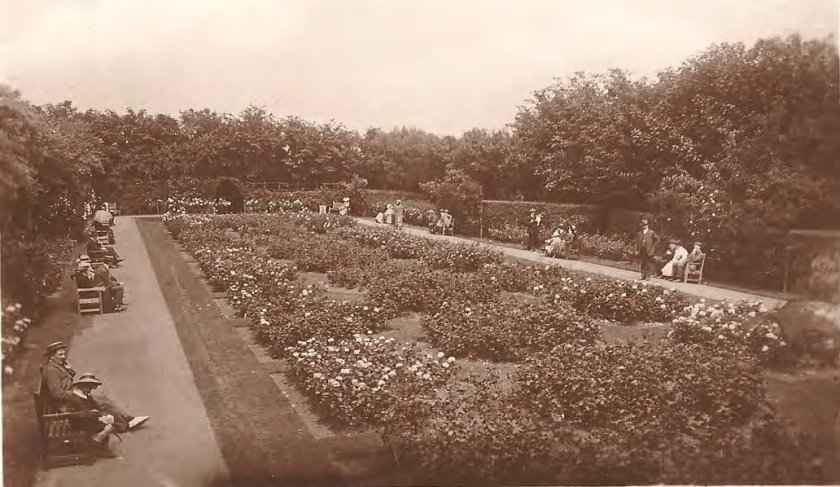

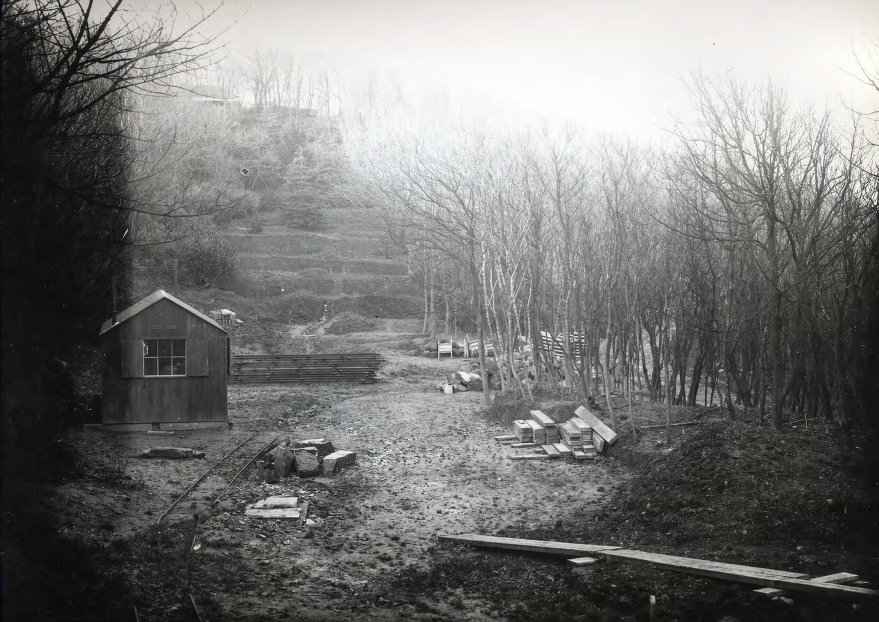

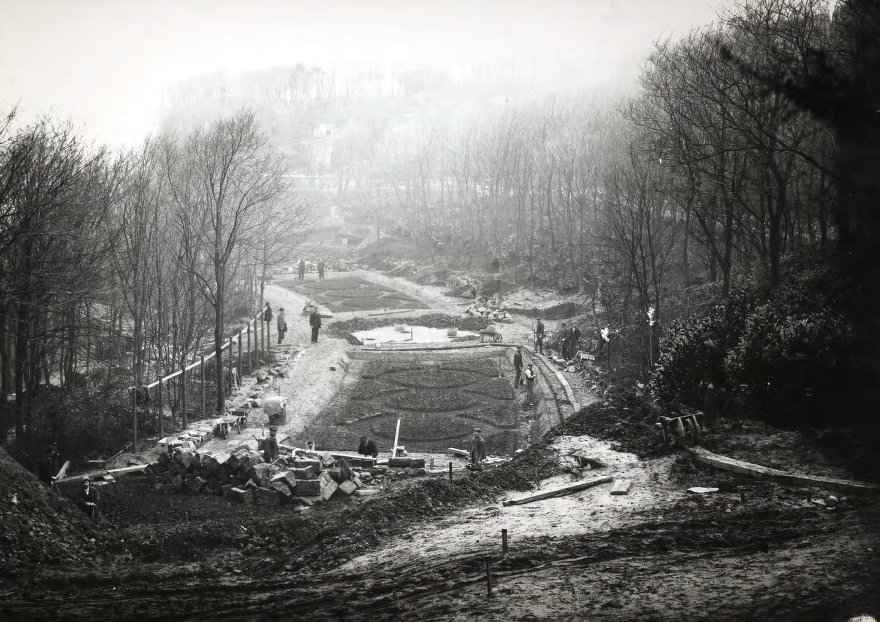
The Italian Gardens under construction c.1911 on the site of two older, smaller rosaries built by Beeforth. Note the already existing, maturing tree growth, essential to provide the sheltered environment in which to grow many of the roses and bedding plants, but which is also part of the essential spirit of the place with limited views out and designed to be suddenly, unexpectedly revealed to those approaching along meandering paths from several directions with a sense of theatrical air.

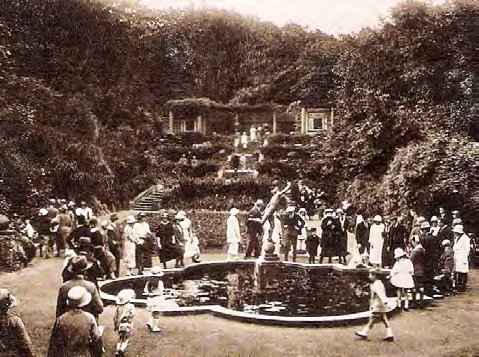

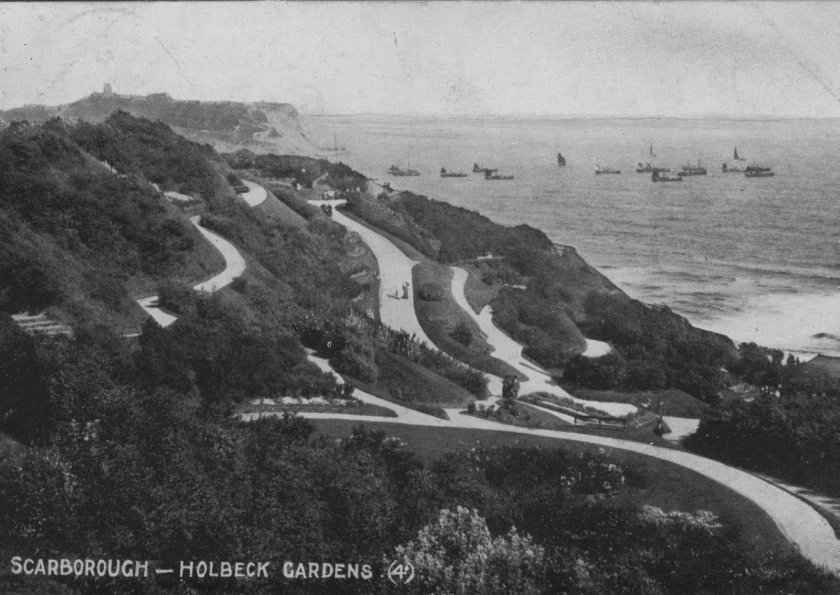

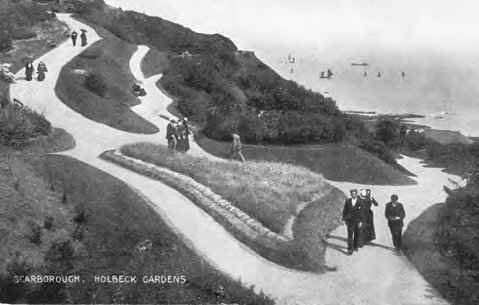

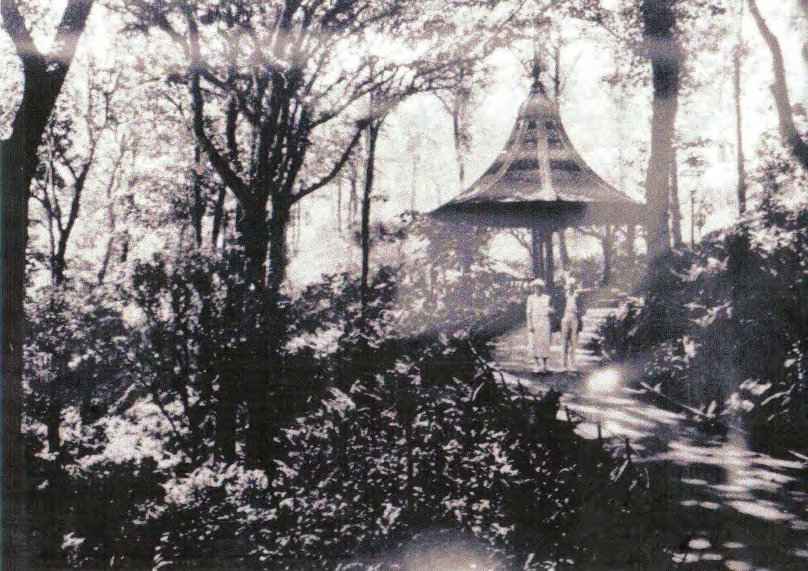
The Spa Gardens’ lost shelter, previously located on a path from the Crown Hotel.
